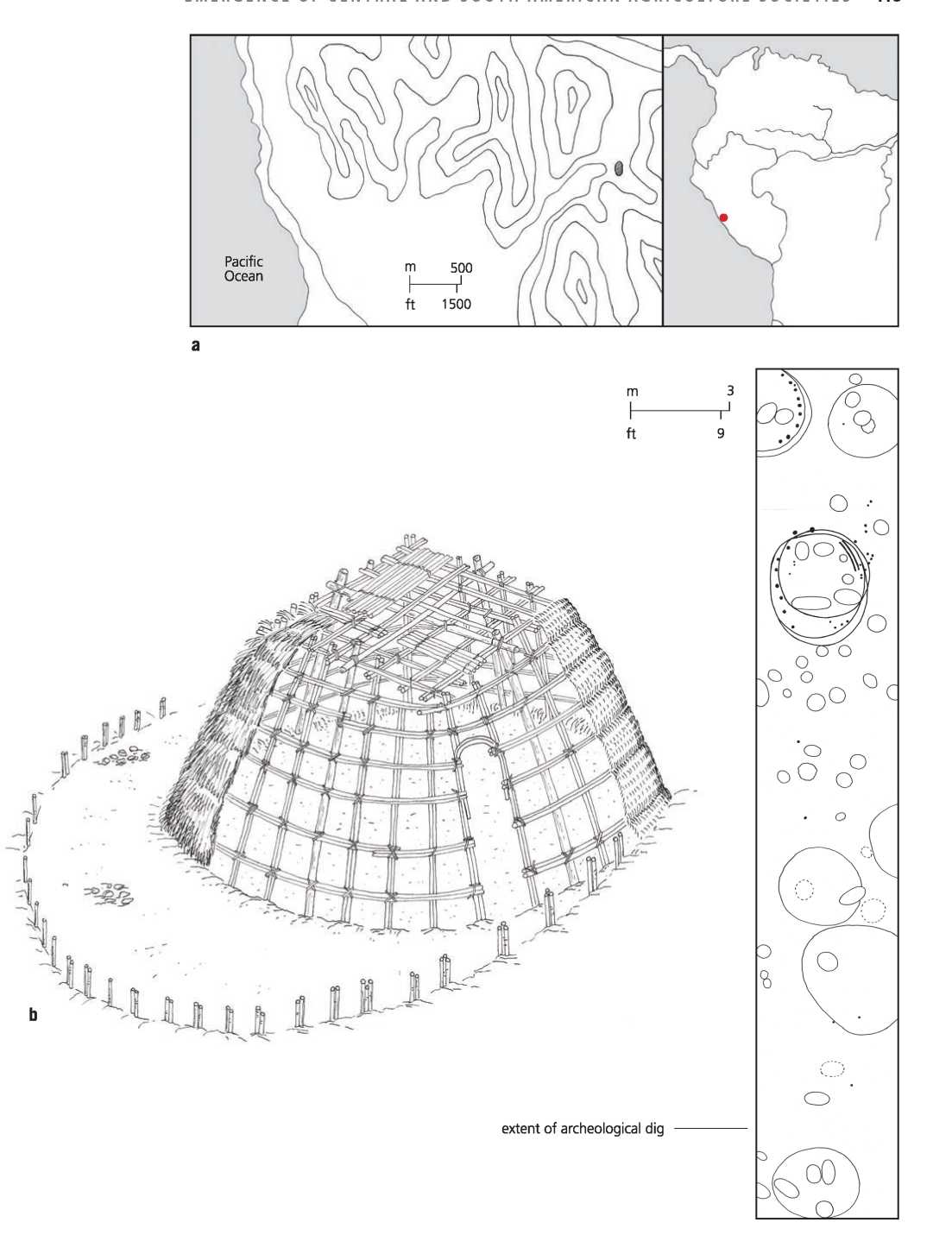In Peru, there was a somewhat similar story of transition, even though climatically it was far different. There were three ecological zones: the quasi-tropical lowlands that face east and down into the Amazon jungle; the mountains with their rivers, deep valleys, and rugged slope; and the shoreline with its desert. The latter zone is particularly inhospitable, for it is exceedingly dry with river marshes few and far between. But because the rising mountains trap coastal humidity coming off the ocean, a unique microclimate exists, called lomas, in which fog condenses on slopes between June and October, nourishing vegetation and attracting animals (Figure 11.14). The lomas zone is thin, often not more than a kilometer up the slope, but in bits and pieces it stretches for hundreds of kilometers from

Figure 11.14: Lomas (fog), Peru. Source: Brian McMorrow
Northern Chile into central Peru. In this area thrived the Chinchorro culture of northern Chile. From their graves we have samples of fishhooks made of cactus needles, bone necklaces, stone sinkers and knives, and bone tools. There were also harpoons with which to catch bigger fish.13
Around 5000 bce the Chinchorro began mummifying their dead, skinning the corpses and defleshing the bones. The skeleton would be reassembled, reinforced with sticks, and internal organs would be replaced with clay, llama leathers, and dried plants; thin bundles of reeds and grasses replaced muscles. The bodies were stufied with feathers from sea birds, difi'erent types of soils, and llama hair. This reconstructed body would then be covered with the skin of the deceased, which would have been carefully removed and set aside. The skin if need be was “patched” with seal and sea lion skin. The entire body was then covered with an ash paste and finished with a coat of shiny black manganese. A mask of clay incised with small slits for the eyes and mouth was placed over the face to give the body the impression of a peaceful slumber. Both children and adults of both sexes were mummified. The mummies were tightly covered, wrapped with painted reed blankets.
Chinchorro mummification developed through three distinct styles—black, red, and mud-coated—before the practice died out sometime in the first century bce. The black style (ca. 5050-2500 bce), the most complex, went out of fashion around 2500 bce. It is possible that the blackening agent manganese became scarce and was replaced with red ochre. In the later stage, the earthen visage that covered the face was characterized by open mouths and eyes, conveying a sense of alertness rather than sleep.14
Moving northward, one would have encountered dozens if not hundreds of small lomas communities. Paloma, near the Chilca River about 65 kilometers south of Lima, was occupied from between 5700 and 3000 bce with two hundred graves and about fifty reed huts (Figure 11.15a, 11.15b). Huts ranged in shape from circular to ovoid to quadrilateral.

Figure 11.15a, b: Paloma, Peru settlement: (a) site plan, (b) view, (c) part of archaeological dig showing house arrangements. Source: Mark Jarzombek/Jeffrey Quilter, Life and Death at Paloma, Society and Mortuary Practices in a Preceramic Peruvian Village (Iowa City: University of Iowa Press, 1989), 17
Floors sloped gently toward the center to a depth of between 25 to 60 centimeters. The main supports were willow or cane poles bound with reed twine and placed in a ring of earth encircling the floor, sometimes reinforced at their base by stones. Large reed mats were placed over the structure to protect against the winter damp and chill. Floors were also covered with mats. The average size of a house was about 4 meters in diameter. Although small, the house was certainly adequate since most activities were performed outdoors. Burials sometimes took place inside a hut, which was then abandoned, but most were outside. The dead were wrapped in reed mats. There is no clear pattern of the village organization and no empty places have been found suggesting a plaza. But large mounds of shells exist and may have over time formed the rudimentary platform for communal activities. As to the size of the settlement, it is not known whether the village represents occupations by small numbers of people over a long period of time, or short occupation by a larger number of people.15




 World History
World History









